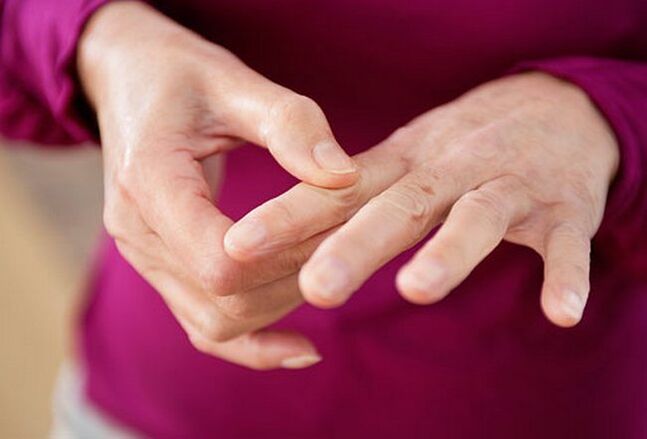
In older age groups, finger pain is very common in both men and women. Swelling, stiffness, and cracking of the joints are often accompanied by swelling, stiffness, and cracking. Such symptoms are not only signs of natural aging of the body, but also clinical manifestations of various pathologies. Therefore, the cause of pain in the finger joints should be determined and treatment should be performed immediately.
Causes of pain in the joints of the fingers
If the pain occurs weekly, it can no longer be attributed to the increased muscle tension after long handwork. In the early stages of development, inflammatory or degenerative-dystrophic pathologies manifest themselves in this way. Finger pain involves the gradual destruction of bone and cartilage tissue, which can cause joint deformity, complete or partial immobilization (ankylosis).
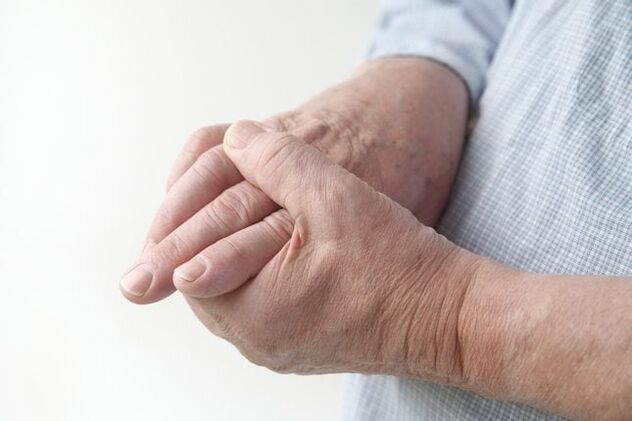
Arthritis
The joints of the fingers of the hand can be affected by rheumatoid, reactive, psoriatic arthritis - inflammatory, rapidly progressing pathologies. In addition to severe pain, inflammation can also be observed - redness and swelling of the skin, restriction of range of motion. And the course of infectious arthritis is often accompanied by signs of general intoxication of the body - a rise in body temperature, chills, fever.
Still disease
It is a severe autoimmune pathology that presumably results from an inadequate response of the immune system to the introduction of pathogenic microorganisms. Still’s disease doesn’t just affect small and large joints. Damage to the skin, cardiovascular system, respiratory system and lymph nodes.
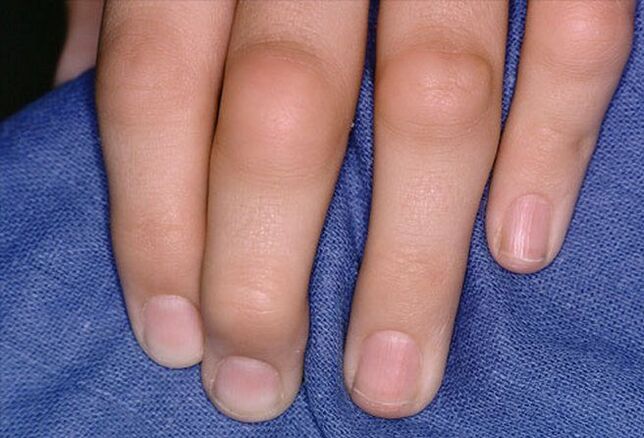
Osteoarthritis
This pathology is characterized by the destruction of bone tissue with further deformation of the joints. In the morning, osteoarthritis causes the fingers to swell, and when you try to bend or straighten them, you experience some resistance. Sharp pains occur only during the period of relapse, and during the period of remission - only mild discomfort.
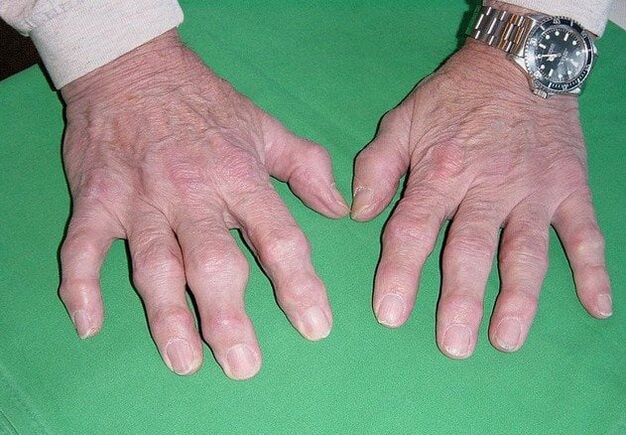
Narrowing ligamentitis
The pathology is caused by frequently repeated monotonous movements. Narrowing ligamentitis affects the ligament device of the hand in which the occlusion of the finger is in an extended or bent position. But such a pronounced symptom occurs in the last stage of the pathology and manifests itself in the initial stage with pain, crackling, or clicks when the joints are bent.
Gout
In gout, crystals of uric acid salts begin to deposit in the joints of the fingers, provoking irritation of the soft, cartilaginous, bone tissues. An inflammatory process develops in which the ligaments, muscles and tendons are gradually affected. During a gouty attack, there are sharp, burning, throbbing pains. Above the joints, the skin swells, turns red, becomes hot to the touch.
Polyosteoarthritis
Polyosteoarthritis is a form of osteoarthritis that affects multiple joints at once. Cartilage tissues thin out, thicken and lose their cushioning properties. In order to stabilize the joints, the bone structures will begin to deform and grow with the formation of osteophytes. These growths damage the soft tissues, often leading to an inflammatory process.
Injury
Pain in the joint of the fingers can be the result of fracture, displacement, subluxation, rupture of muscles, ligaments, tendons. A person receives such injuries when he falls on a straight arm, has a strong directed blow or bruise. If the victim does not seek medical attention, the joint structures fuse in a poor anatomical position, making the hand pain permanent, increasing after hypothermia or a sharp change in the weather.
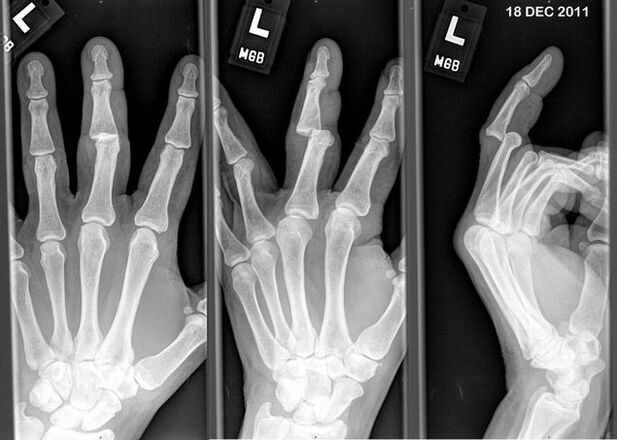
Vibration disease
This pathology develops in manual mechanized workers using percussion or rotary devices. Clinically, vibration disease manifests itself not only in discomfort in the joints of the fingers of the hand, but also in vascular disorders, angiospasms, circulatory disorders, and hypertension.
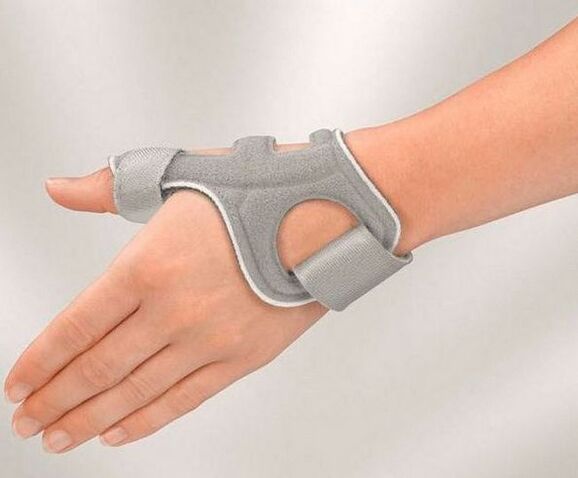
Tunnel syndrome
The cause of tunnel syndrome is any pathology that causes a decrease in the volume of the carpal tunnel (arthrosis, arthritis, lipoma). The result is a compression-ischemic lesion of the middle nerve. Pain occurs, sensitivity decreases, patients complain to the doctor about numbness, tingling sensations, sliding creeps. Any hand gesture is accompanied by weakness, especially if you have to grab an object with your thumb.
Symptoms
Gouty, infectious, rheumatoid arthritis, including juvenile symptoms, is a twitching, throbbing, sharp pain in the finger joint. Concomitant symptoms include an increase in local temperature, redness and swelling of the skin.
Arthrosis and other degenerative-dystrophic pathologies are asymptomatic in the early stages of development. Occasionally there is mild pain that disappears after a short rest. But their severity is constantly increasing. Pain is accompanied by stiffness, clicks when bending and / or stretching the fingers.
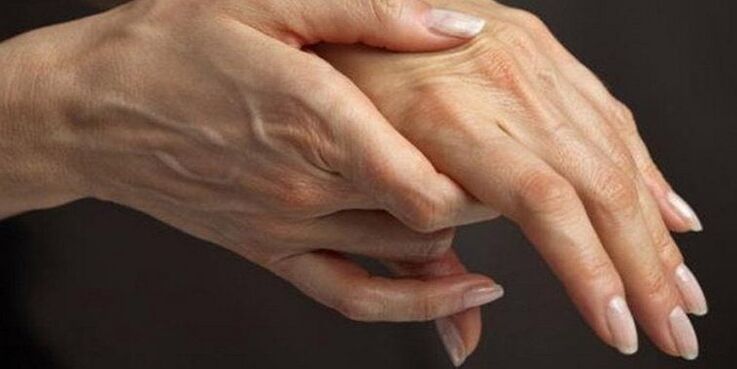
Effects
In the absence of medical intervention, the intensity of pain increases in the background of deformity of the interphalangeal joints. In the final stage of any pathology, a partial or complete fusion of the joint space occurs. A person is unable to bend or bend his fingers, which causes a decrease in work capacity, disability.
Inflammatory and destructive processes gradually spread to healthy soft, cartilage and bone tissues. Therefore, you may soon feel pain in several joints or fingers.
Diagnostics
The primary diagnosis is made based on external examination, patient complaints, medical history, and the results of a number of functional tests. To confirm this, X-rays, MRI, CT, arthroscopy are performed. If the infectious origin of the pathology is suspected, a biological sample was inoculated into the medium to determine the type of bacteria and their resistance to antibiotics.
Treatment
When determining the therapeutic tactic, the doctor (orthopedist, rheumatologist, traumatologist) takes into account the type of disease, the form of its course, the degree of tissue damage and the number of complications. It is often recommended to wear a soft bandage, splint, or semi-rigid, rigid orthosis to reduce the severity of the patient’s pain.
Medicines
Drugs from various clinical and pharmacological groups are used to treat pathologies manifested in pain in the joints of the fingers of the hand. These are non-steroidal anti-inflammatory drugs (NSAIDs), muscle relaxants, glucocorticosteroids, chondroprotectors. Also used are drugs that improve blood circulation, B vitamins, warming ointments. Intramuscular and sometimes intraarticular administration of drugs is used to relieve acute pain. The use of tablets or ointments allows you to get rid of less pronounced discomfort.
Massage
After relieving acute pain and inflammation, patients are prescribed classic, acupressure, vacuum treatments, including hardware massage. Revitalizing procedures help improve blood circulation, eliminate muscle cramps, and speed up the recovery of damaged tissues.
Physiotherapy
Electrophoresis, ultrophorophoresis procedures help to relieve pain or get rid of it completely. In their implementation they use hormonal agents, chondroprotectors, anesthetics, analgesics, B vitamins. For the treatment of joint pathologies, patients may prescribe up to 10 magnetotherapy, laser therapy, UHF therapy treatments.
Physical exercises
Regular exercise can quickly strengthen the muscles of the hand, preventing the progression of arthrosis or arthritis. The set of exercises is prepared by the exercise doctor, taking into account the type of disease. This usually involves rotating the hand, bending and extending the fingers, grasping and holding small objects.
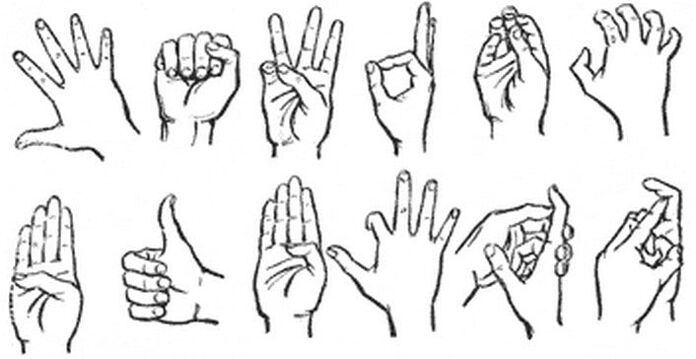
Diet
Patients with arthritis or osteoarthritis should have plenty of fresh herbs, vegetables and fruits in their diet. Semi-finished products, smoked meats, fast food, fatty meats and possible alcohol should be completely excluded from the daily menu. Instead, it is useful to eat rabbit meat, beef, fatty sea fish, clean soups, cereals, dairy products.
Folk remedies
After the main treatment, pain and inflammation have been eliminated, doctors may allow the use of conventional medicine. During the rehabilitation period, the use of certain decoctions, hand baths and homemade ointments is allowed.

Use of herbal infusions and decoctions
The course of pathologies that cause finger pain is often exacerbated by the deterioration of a person’s psychoemotional state. The use of herbal teas will improve. St. John's wort, valerian, uterus, thyme, lemongrass, oregano have a tonic, soothing, sleep-normalizing effect. To make the drink, a teaspoon of dry plant material (without a slide) is cooked with a glass of boiling water. Allow to infuse for a few hours, then filter and take 100 ml before going to bed.
Fried onion and wax ointment
Two peeled medium-sized onions are fried until soft, smoothed in a mortar, and 20 g of wax is added in portions, which are melted in a water bath. The resulting mass is applied to the joints and fixed with a gauze bandage. The duration of the treatment procedure is 1-2 hours.
Honey and mustard ointment with herbs
Pour a tablespoon of dried flowers of calendula and chamomile into a bowl, pour 0, 5 cups of boiling water, leave for 5 hours. In a mortar, mix a teaspoon of dry mustard and greasy sour cream, add 2 tablespoons of honey. The resulting infusion is injected dropwise until a homogeneous mass is formed. Before using the ointment, lubricate the skin with vegetable oil.
Herbal baths
Put 5 berries rosehip, juniper, barberry in a thermos, pour in a tablespoon of elecampane, St. John's wort, birch buds. Pour a liter of boiling water, leave for 2 hours. Cool slightly, strain, pour into a cup, add more warm water if necessary. Dip the brushes into the resulting infusion for 30 minutes.
Oil baths
Fill a small container with warm water (1, 5-2 liters), add 1-2 drops of essential oil of rosemary, eucalyptus, pine. Pour in a tablespoon of cosmetic almond oil, shake. They put their hands in the water for 30-40 minutes. After the procedure, any nourishing or moisturizing cream is rubbed into the skin.
Straw trays
Pour 0, 5 liters of chopped oat straw into a small pan, pour 2 liters of hot water. Bring to a boil, simmer for 30-40 minutes. Cool to room temperature, filter. Pour the warm broth into a cup, keeping the brushes in it for about half an hour.
Preventive measures
You should have a full physical examination every 6 to 12 months to avoid pain in the joints of your fingers. Pathology observed in the early stages of development generally responds well to conservative treatment. You should also avoid traumatic situations, do not smoke, limit alcohol consumption, and exclude foods high in fat and simple carbohydrates from your diet.
































